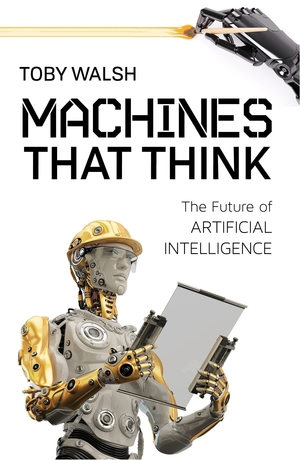Thankfully the author of this book has chosen to write about Artificial Intelligence (AI) in a manner that is understandable to those of us without a significant background in physics, mathematics, or computer science. Additionally he has structured his book in three elements that make it easy to understand the subject. The first section introduces us to the earliest concepts and ideas leading into the efforts to develop AI. This includes meeting some of the mathematicians who began to explore its possible use in machines as well as the logic and problems faced with the details of “thinking.” The second section is focused on where the success and efforts are now occurring. This is the largest section and details specifics of how developers have and are pursuing their efforts at creating Artificial Intelligence.
[alert variation=”alert-info”]Publisher: Prometheus Books
Formats: Paperback, eBook, Kindle
Purchase: Amazon | iBooks[/alert]
To simplify understanding of these processes Mr. Walsh has divided them into 4 general groupings which do overlap. One is “The Learners” who focus on developing computers that can learn as humans do with an ability to acquire new knowledge as exemplified by machine learning. A second is “The Reasoners” looking to develop computer rules of thought to allow progression using limited information. The third is “The Roboticists” focused on building machines that interact and learn with an ability to perceive the world. The last main section is “The Linguists” focused on the understanding and use of written text and spoken language. The third section is looking to the potential future of AI, the difficulties and closing with some projections on the extension of AI into our jobs and lives. Overall, Machines That Think was very well done. This book lays out an easy to grasp review of Artificial Intelligence for curious readers.
[signoff predefined=”Social Media Reminder” icon=”facebook”][/signoff]

